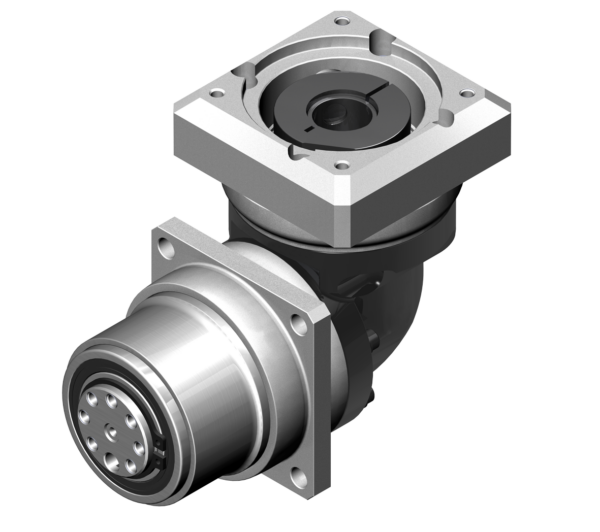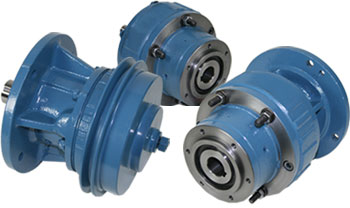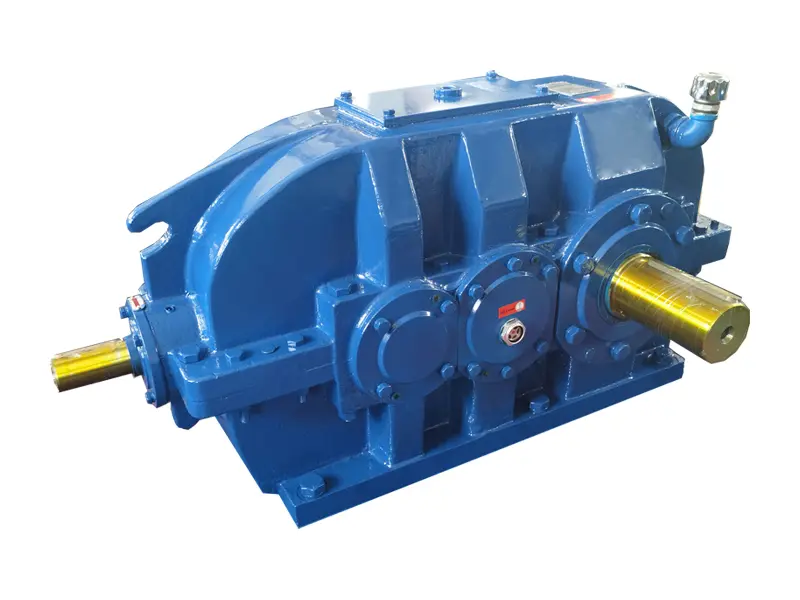Product Description
| Product Features | Description |
| Product Models | T2, T4, T6, T7, T8, T10, T12, T16, T20, T25, Z2, Z4, Z6, Z7, Z8, Z10, Z12, Z16, Z20, Z25, JRTM2, JRTM4, JRTM6, JRTM7, JRTM8, JRTM10, JRTM12, JRTM16, JRTM20, JRTM25 |
| Maintenance | Clean internally and replace lubricant after initial use of 2 weeks or 100-200 hours. For long-term use, replace lubricant every half to 1 year or every 1000-2000 hours |
| Lubricant | China Petroleum’s all-effect gear oil of 90-120 degrees. Under low speed and light load conditions, it is recommended to use all-effect gear oil of 90 degrees. Under heavy load and high temperature conditions, it is recommended to use all-effect gear oil of 120 degrees |
| Product Description | The T series spiral bevel gear steering gearbox is widely used in food, pharmaceutical, chemical, steel, metallurgy, textile, plastic, paper and other machinery equipment, assembly lines and other industries |
| Technical Features | The gearbox has a high rigidity FC-25 cast iron casing. The gears are made of high-quality high-purity alloy steel 20CrMnTi carburized and quenched, and ground. The shaft is tempered alloy steel with high load-bearing capacity. It is equipped with a heavy load-bearing tapered roller bearing. The oil seal has a double lip seal, which has dustproof and oil leakage prevention capabilities |
| Performance Features | The T series spiral bevel gear steering gearbox is standardized and has many varieties. The speed ratio is all actual transmission ratios, with an average efficiency of 98%. It can run CHINAMFG and reverse, with smooth low-speed or high-speed transmission, low noise, small vibration, and large bearing force |
| Technical Parameters | Speed ratio range: 1/1, 1.5/1, 2/1, 2.5/1, 3/1, 4/1, 5/1. Torque range: 11.2 – 5713 Nm. Power range: 0.014 – 335 kW |
·Product Models: T2, T4, T6, T7, T8, T10, T12, T16, T20, T25, Z2, Z4, Z6, Z7, Z8, Z10, Z12, Z16, Z20, Z25, JRTM2, JRTM4, JRTM6, JRTM7, JRTM8, JRTM10, JRTM12, JRTM16, JRTM20, JRTM25.
·Maintenance: The gearbox should be cleaned internally and the lubricant should be replaced after the initial use of 2 weeks or 100-200 hours. For long-term use, the lubricant should be replaced every half to 1 year or every 1000-2000 hours.
·Lubricant: The product uses China Petroleum’s all-effect gear oil of 90-120 degrees. Under low speed and light load conditions, it is recommended to use all-effect gear oil of 90 degrees. Under heavy load and high temperature conditions, it is recommended to use all-effect gear oil of 120 degrees.
·Product Description: The T series spiral bevel gear steering gearbox is widely used in food, pharmaceutical, chemical, steel, metallurgy, textile, plastic, paper and other machinery equipment, assembly lines and other industries.
·Technical Features: The gearbox has a high rigidity FC-25 cast iron casing. The gears are made of high-quality high-purity alloy steel 20CrMnTi carburized and quenched, and ground. The shaft is tempered alloy steel with high load-bearing capacity. It is equipped with a heavy load-bearing tapered roller bearing. The oil seal has a double lip seal, which has dustproof and oil leakage prevention capabilities.
·Performance Features: The T series spiral bevel gear steering gearbox is standardized and has many varieties. The speed ratio is all actual transmission ratios, with an average efficiency of 98%. It can run CHINAMFG and reverse, with smooth low-speed or high-speed transmission, low noise, small vibration, and large bearing force.
RFQ
Q:What information should I tell you to confirm speed reducer?
A: Model/Size, Transmission Ratio, Shaft directions & Order quantity.
Q:What if I don’t know which gear reducer I need?
A:Don’t worry, Send as much information as you can, our team will help you find the right 1 you are looking for.
Q:What should I provide if I want to order NON-STANDERD speed reducers?
A: Drafts, Dimensions, Pictures and samples if possible.
Q:What is the MOQ?
A: It is OK for 1 or small pieces trial order for quality testing.
Q:How long should I wait for the feedback after I send the inquiry?
A: Within 6 hours
Q:What is the payment term?
A:You can pay via T/T(30% in advance+70% before delivery), L/C ,West Union etc
| Application: | Motor, Electric Cars, Motorcycle, Machinery, Marine, Toy, Agricultural Machinery, Car |
|---|---|
| Function: | Distribution Power, Clutch, Change Drive Torque, Change Drive Direction, Speed Changing, Speed Reduction, Speed Increase |
| Layout: | Coaxial |
| Hardness: | Hardened Tooth Surface |
| Installation: | Horizontal Type |
| Step: | Three-Step |
| Samples: |
US$ 100/Piece
1 Piece(Min.Order) | |
|---|

Can you provide real-world examples of products that use pulley gearbox technology?
Pulley gearbox technology finds application in various industries and products where speed reduction, torque multiplication, and efficient power transmission are required. Here are some real-world examples of products that commonly use pulley gearbox technology:
Automotive Industry: Pulley gearboxes are widely used in automotive applications to transmit power and control rotational speed. One prominent example is the continuously variable transmission (CVT) system, which utilizes a pulley gearbox to provide seamless and efficient speed control. CVTs are found in many modern passenger vehicles, where they offer improved fuel efficiency by continuously adjusting the gear ratio to match the driving conditions. Pulley gearboxes are also employed in engine accessory drives, such as alternator drives, air conditioning compressor drives, and power steering systems.
Industrial Machinery: Pulley gearboxes are commonly utilized in various industrial machinery and equipment. Belt-driven machines, such as conveyor systems, packaging equipment, and material handling systems, often incorporate pulley gearboxes to transmit power and control speed. These gearboxes enable efficient power transfer and allow for easy speed adjustment to match specific application requirements. Additionally, pulley gearboxes are used in machine tools, textile machinery, printing presses, and many other industrial applications where precise speed control, torque multiplication, and energy efficiency are essential.
Exercise Equipment: Many types of exercise equipment, including treadmills, elliptical machines, and stationary bikes, utilize pulley gearboxes. These gearboxes are responsible for transmitting power from the motor to the moving components, such as the running belt or pedal assembly. By incorporating pulley gearboxes, exercise equipment manufacturers can provide users with adjustable speed settings and variable resistance levels, allowing for customized workouts and efficient energy utilization.
Home Appliances: Pulley gearboxes can be found in various home appliances where speed reduction and efficient power transmission are required. For example, washing machines often utilize pulley gearboxes to control the drum’s rotational speed during different wash cycles. Similarly, certain types of blenders and mixers use pulley gearboxes to achieve multiple speed settings for food preparation tasks. The gearboxes enable efficient power transfer and allow users to select the desired speed based on the specific application.
HVAC Systems: Heating, ventilation, and air conditioning (HVAC) systems commonly employ pulley gearboxes in their fan assemblies. These gearboxes enable speed control and ensure that the fans operate at the desired rotational speed for efficient air circulation. By adjusting the pulley sizes or gear ratios, the airflow can be optimized to match the cooling or heating demands of the space, resulting in energy savings and improved HVAC system performance.
Farming and Agricultural Equipment: Pulley gearboxes are utilized in various farming and agricultural equipment to transmit power and control rotational speed. Equipment such as combine harvesters, hay balers, and irrigation systems often incorporate pulley gearboxes to drive and control the speed of different components. These gearboxes enable efficient power transmission and help optimize the operation of agricultural machinery for improved productivity and reduced energy consumption.
Power Tools: Pulley gearboxes are also present in certain power tools to provide speed control and torque multiplication. Examples include bench grinders, drill presses, band saws, and woodworking equipment. By incorporating pulley gearboxes, power tool manufacturers can offer users the flexibility to adjust the speed and optimize the tool’s performance for various applications, while ensuring efficient power transfer and reduced power consumption.
Entertainment Industry: In the entertainment industry, pulley gearboxes are utilized in various equipment and devices. Examples include stage machinery for theater productions, where pulley gearboxes are used to control the movement of curtains, scenery, and other stage elements. Pulley gearboxes are also found in amusement park rides, enabling precise speed control and ensuring the safety and enjoyment of the riders.
These are just a few examples of the wide range of products and industries that utilize pulley gearbox technology. The versatility and efficiency of pulley gearboxes make them a valuable component in numerous applications where power transmission, speed control, and energy efficiency are essential.

How do pulley gearboxes handle variations in load and torque during operation?
Pulley gearboxes are designed to handle variations in load and torque during operation by utilizing the mechanical advantage provided by the pulley system and adjusting the pulley ratios. This flexibility allows pulley gearboxes to adapt to changing conditions and maintain consistent performance. Here’s a detailed explanation of how pulley gearboxes handle load and torque variations:
Mechanical Advantage: Pulley gearboxes utilize the principle of mechanical advantage to handle variations in load and torque. The different sizes of the driving and driven pulleys create a mechanical advantage that allows for the transformation of speed and torque. By adjusting the pulley sizes and ratios, the gearbox can modify the mechanical advantage to accommodate different load and torque requirements. This mechanical advantage compensates for variations in load and enables the gearbox to deliver the necessary torque to overcome resistance or deliver power efficiently.
Pulley Configurations: Pulley gearboxes can be designed with various pulley configurations to handle load and torque variations effectively. For example, compound pulley systems can be employed to provide multiple stages of speed reduction or increase, allowing for finer control over torque and speed. Multiple belts or ropes can also be used to distribute the load across several pulleys, reducing stress on individual components and enhancing the gearbox’s ability to handle variations in load and torque.
Adjustable Pulley Systems: Some pulley gearboxes incorporate adjustable pulley systems, such as variable speed drives or tension-adjustable pulleys. These systems allow for on-the-fly adjustment of the pulley sizes or tension, enabling the gearbox to adapt to changing load and torque conditions. By adjusting the pulley ratio or tension, the gearbox can optimize the speed, torque, and power transmission efficiency based on the specific requirements of the application.
Load Sensing and Feedback Mechanisms: In certain applications, pulley gearboxes may be equipped with load sensing and feedback mechanisms. These mechanisms monitor the load or torque being exerted on the gearbox and provide feedback signals that can be used to adjust the pulley ratios or control other aspects of the system. Load sensing and feedback mechanisms help optimize the performance of the gearbox by dynamically responding to variations in load and torque, ensuring efficient power transmission and preventing overload or underload conditions.
System Design and Overload Protection: The overall design of the pulley gearbox can also contribute to its ability to handle variations in load and torque. Robust construction, appropriate selection of materials, and careful engineering considerations ensure that the gearbox can withstand high loads and torque without failure. Additionally, overload protection mechanisms, such as torque limiters or safety clutches, can be incorporated to safeguard the gearbox and other components from damage in the event of sudden or excessive loads.
Regular Maintenance: Proper maintenance practices, including regular inspection, lubrication, and component replacement, are essential for ensuring the optimal performance and longevity of pulley gearboxes. By maintaining the gearbox in good working condition, potential issues that may arise from load and torque variations can be identified and addressed early, reducing the risk of failure and improving overall reliability.
In summary, pulley gearboxes handle variations in load and torque during operation through the mechanical advantage provided by the pulley system, adjustable pulley configurations, load sensing and feedback mechanisms, robust system design, and regular maintenance. These features allow pulley gearboxes to adapt to changing load conditions, deliver the required torque, and ensure efficient power transmission in a wide range of applications.

Are there variations in pulley gearbox designs for different load conditions?
Yes, there are variations in pulley gearbox designs to cater to different load conditions. The design of a pulley gearbox takes into account the specific load requirements, including the magnitude of the load, the nature of the load (constant or variable), and the duty cycle of the application. Here’s a detailed explanation of the variations in pulley gearbox designs for different load conditions:
- Heavy-Duty Load Conditions: For applications that involve heavy loads or high torque requirements, pulley gearboxes are designed with robust and durable components. These gearboxes are constructed using materials with high tensile strength and are engineered to withstand the stress and forces associated with heavy loads. Additionally, the pulley sizes and configurations are optimized to provide the necessary mechanical advantage and torque transfer capabilities.
- Light to Moderate Load Conditions: Pulley gearboxes designed for light to moderate load conditions may feature lighter and more compact designs. They are typically constructed using materials that offer a balance between strength and weight, optimizing the gearbox’s efficiency and performance for the specific load requirements. The pulley sizes and configurations are selected to provide the desired speed ratios and torque output while considering the load’s magnitude.
- Variable Load Conditions: In applications where the load conditions vary or are subject to fluctuations, pulley gearboxes may incorporate features to handle these variations. This can include adjustable pulley systems that allow for quick changes in speed ratios and torque output. The gearbox may also be designed to accommodate dynamic load conditions, with components engineered to absorb shocks and vibrations resulting from load variations.
- Continuous Duty Load Conditions: For applications that require continuous operation under load, pulley gearboxes are designed with considerations for heat dissipation and durability. They may incorporate cooling mechanisms such as fans or heat sinks to maintain optimal operating temperatures. The gearbox housing and components are designed to withstand prolonged operation and minimize wear and tear.
- Cyclic or Intermittent Load Conditions: Pulley gearboxes used in applications with cyclic or intermittent load conditions may be designed to handle the specific duty cycle. The gearbox may incorporate features such as enhanced lubrication systems to minimize friction and wear during start-stop cycles. The materials and construction may be optimized to withstand the repetitive loading and unloading cycles without compromising performance or reliability.
Overall, pulley gearbox designs can vary significantly depending on the load conditions they are intended to handle. The selection of materials, construction methods, pulley configurations, and additional features are all tailored to ensure optimal performance, durability, and efficiency for the specific load requirements of the application.


editor by CX 2023-10-26
